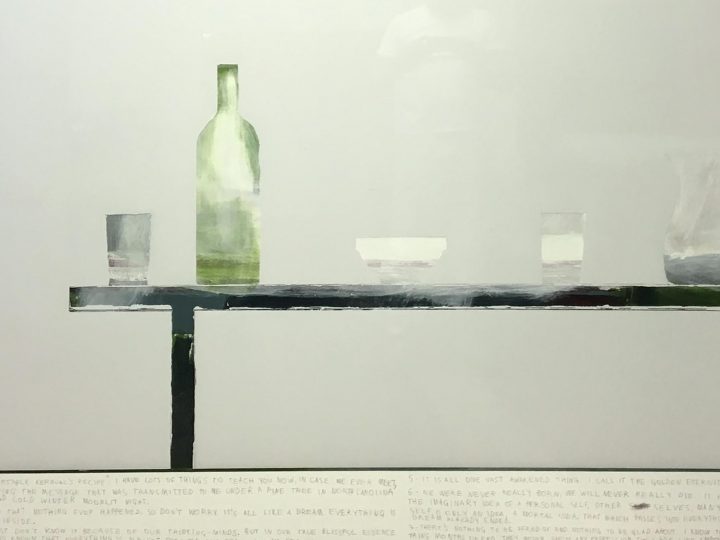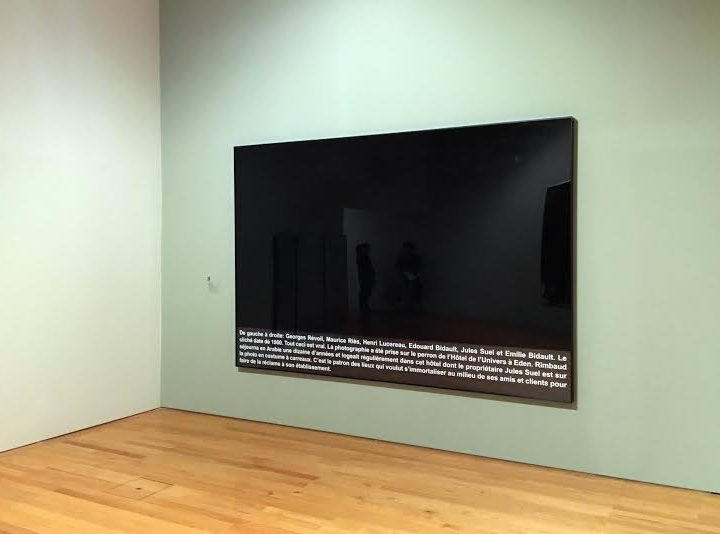19.12.20 > 22.05.21
Zet Gallery, Braga
Curated by Helena Mendes Pereira
João Louro (b.1963) is one of the most original Portuguese artists of his generation. One of the best, I venture. “ABOUT TODAY” is the individual exhibition that zet gallery thought and created with him and that shows the premonitory and reflective character of his work. In a selection of about ten and a half works, produced between 1995 and 2019, in its generality of exclusively display (or almost), and which call for different media, although it cannot be denied that the two-dimensionality and pictorial nature of painting are the guidelines of the proposals, the exhibition reflects a universe of personal references by an artist who has long been used to his questions and his restless and attentive gaze on the world. The time interval is, in fact, given by “História do Crime” (History of Crime), a work that is almost an anthology of the importance of manipulation and the use of the word in all its visual production. That is why we dedicated a room to the collection of works in this series or were it not a path of almost a quarter of a century. João Louro, one might say, likes enigmas and to invest his creations with reading layers that allow freeing the difference that Michel Foucault (1926-1984) spoke of:
In order to liberate difference, we need a thought without contradiction, without dialectic, without negation; a thought which says yes to divergence; an affirmative thought of which the instrument is disjunction; a though of the multiple – of dispersed and nomadic multiplicity that is not limited or confined by constraints of similarity; a thought that does not obey the academic model (that falsifies the already made answer), but that addresses insoluble problems, that is, a multiplicity of extraordinary points that are discovered as their conditions are distinguished and that insists, subsists, in a replay game . (FOUCAULT, Michel, Nietzsche, Freud e Marx. Theatrum Philosoficum. Porto, Publicações Anagrama, 1980. Page 63)
João Louro has an academic background in architecture and painting and when he uses photography, installation or expansion of his objects to a third dimension, he is permanently relating to the space-time that contextualizes the action and the moment and, above all, his thinking. Idea-art, concept-art, in their minimal expression, are starting points, but the arrival is on the spectator. It is he who concludes the work, who defines it, who interprets it and makes it extrapolate the hermetic space of the studio where it was born. Looking at João Louro’s work is a full invitation to emancipation and his images are thoughtful, starting this time from Jacques Rancière (b.1940):
Supposedly an image does not think. We commonly assume that an image is just an object of thought. Thus, a thoughtful image is an image that contains unthought thought, a thought that is not susceptible of being attributed to the intention of the one who produces it and that has an effect on the one who sees it, without it linking it to a specific object.
(…)
The art of the aesthetic era did not fail to bet on the possibility that each medium could offer to mix its effects with the effects of others, to assume its role and thus create new figures, awakening sensitive possibilities that had been exhausted. The new techniques and supports offer unprecedented possibilities for such metamorphoses. The image will not stop being thoughtful so quickly. (RANCIÈRE, Jacques, O Espectador Emancipado. Lisboa, Orpheu Negro, 2010. Page 157 e190)
João Louro’s artworks, his images, are thoughtful, thinking, true philosophical theories. Not only do they contain the author’s semiotics, but they actively challenge us. There is no possible passivity in the dynamic contemplation that we do and each one is a possibility for learning, for reflection and, in many cases, if not all, there is the premonitory sense as the one we see in the work “The Plagues”, from 2001. In the year of the attacks on the World Trade Centre in New York, a turning point in the history of mankind, João Louro makes the prognosis, if we want, of what culminates in this strange year of 2020. But the future lasts a long time, we need to believe that it is true, and it is in justifying the metaphor that we confront the plagues with yet another work in which words hide references and other authors. “L’Avenir Dure Longtemps”, from 2003/4, borrows a name from a book by Louis Althusser (1918-1990) that constitutes a kind of autobiography of a philosopher, French but of Algerian origin, associated with Structural Marxism.
“ABOUT TODAY” is born from this first awareness of João Louro’s journey: his chilling contemporaneity, given, on the one hand, by the reading and use he makes of the means and technologies that his time puts at his disposal, which makes him travel between pure painting exercises and works in which he uses light, as is the case of the work “Love” and that corresponds to one of his paths and explorations in recent years; and, on the other, for the relevance of their thematic suggestions. I would venture to quote the song by “The Beatles” that tells us that love is all we need (“All You Need Is Love / Love is All You Need”). And speaking of songs, “About Today” is the title of a song by “The National”, released in 2004, in which the story of a couple, like so many others, who was distracted from love in the comfort and everyday accommodation, and lost the affections, the urgency to take care. Love, liquid or not – in the recovery of the vision of Zygmunt Bauman (1925-2017) – is the theme of all human existence, transversal to each and every one of us and, therefore, it is always current, from now and in the morning. In her “Misunderstanding in Moscow”, written around 1967, Simone de Beauvoir (1908-1986) approaches the cause of “The National”:
Is it true what they say that we can’t communicate, that nobody understands anyone?” Nicole asked herself. She looked at André, sitting on the Macha’s divan, with a glass of vodka in her hand, and thought that she had to review all their common past. They had lived with their backs to each other, each for themselves, ignoring each other instead of being united, transparent. Before leaving the room that morning, André looked at her hesitantly, wanting to give her an explanation. She had opened the door, he had followed her, and in the taxi, they remained silent. There were no explanations to give. The words would shock against that anger, that pain, that hardened heart. How much neglect, how much indifference! In front of Macha, both represented a polite farce throughout the day. How am I supposed to tell him that I’m leaving before André? (BEAUVOIR, Simone, Mal-entendido em Moscovo. Lisboa, Quetzal Editores, 2015. Page 75)
On one of the visits I made to his atelier, in Lisbon, at the moment we chose the works that would be part of the exhibition, João Louro tells me that he wants to dedicate this exhibition to Women. Crossing this idea with my musical reference, mentioned above, we choose the works together, having privileged some that were withdrawn in the intimacy of the artist and that had not yet had the opportunity of emancipation, of being thought, with the public. Among them is one of those that was in Venice, in 2015, when the artist represented Portugal in the oldest Biennial in the world and, without a doubt, in the most relevant event of the global contemporary art system. We chose “Cover #18 (Dylan Thomas)” for the symbology of the trip and for expressing the path of excellence of an artist with hundreds of exhibitions held, represented in the most important collections, public and private, in Portuguese context and abroad. And we returned to focus on Women and the rest of Humanity.
It is for this reason that “ABOUT TODAY” is the exhibition that, since April 2014, most changed the white cube which is the zet gallery and that everything starts in a huge blue corridor where “Et Dieu Créa la Femme”, 2011, announces, above all, that women created God. Let’s go back to philosophy to engage in the curatorial exercise.
In 1949, Simone de Beauvoir published “The Second Sex”, an existentialist work in which, for the first time, the condition of women is addressed, seeking the introduction of a moral revolution that would promote female economic independence and gender equality in the access to education and the content of that education. In this work, the French philosopher openly addressed issues related to female sexuality and was a reference for a vast number of women’s liberation and emancipation movements across the West. Despite the conservatism of American society at the time, the book was quickly translated into English and published in the USA where, in 1947, Simone de Beauvoir had spent 116 days, having travelled through 19 states and 56 cities and carried out a series of lectures, especially in academic contexts, in which she also addressed these themes. The work would make its way and induce a revolution, also feminine, in progress and whose contours would reach a climax in the conquest of freedoms, rights and guarantees in the late 1960s. In Portugal, we would need the end of a dictatorship to feel its effect, but, as we know, the profound emancipation is yet to come, with an uneven domestic daily life, in general, and with a weak concrete expression of the woman-leader, with few impacts on professional contexts and not representative of what they are today, for example, the reality of universities and their best.
In 1956, the French director Roger Vadim (1928-2000) presents, in an Italian-French production, “Et Dieu… créa la femme”, the film that catapults to the stardom, Brigitte Bardot (b.1934) that plays the young Juliette, whose sexual desires are on edge. Bardot presents herself as a sex-symbol, full of awareness of her body and her power, not letting the camera film her as the origin of evil, the original sin that distorts man from his path. We remember her dancing barefoot on the table and the face of the character Michel Tardieu (played by Jean-Louis Trintignant) perspiring and salivating. The scene is considered one of the most erotic in the history of cinema until then. The film was censored in many countries of Catholic tradition, causing an immense controversy. In the United States of America, the work was even condemned by the League of Catholic Decency, so is not surprising that, in 1955, the naive lifting of the dress of Marilyn Monroe (1926-1962), in Billy Wilder’s “The Seven Year Itch”, much more contained than BB’s choreography the following year, has been the subject of an equivalent scandal. “Et Dieu… créa la femme” was, despite censorship, a huge box office success, as well as “The Seven Year Itch”. It was the woman-object, the sex-symbol woman, the woman-body, which pop art will help to accentuate, as a kind of first and dangerous step towards such emancipation. The first corsets that burst, although keeping their attention on the beautiful and making these women eunuchs of thought, beings of not considered intellect. We will have to wait for Jean-Luc Godard (b.1930) for the protagonist woman to be filmed from her point of view and with a focus on raising awareness of her social condition and the urgency of repositioning her role in the society that was being built.
João Louro makes us think about all this and the hidden semiotics of the works, of a more minimal tendency, which he presents in this exhibition, inscribes us in subtle messages. “From Left to Right #7”, “Clockwise from Above #2” and “Blind Image #221” are three acrylic works on plexiglass that complete the alphabet.
“ABOUT TODAY” by João Louro is our way of saying goodbye to this tremendous year of 2020 and entering 2021 with one of the best. It was a war and the “Arte” (art), a 1995 work that starts the “História do Crime” (History of Crime) series, was our weapon. For this reason and finally, a reference to another war, this time to World War I with the work “Le Mort Homme #1” that takes us to Cumières-le-Mort-Homme, a commune in the east of France that, after the Battle of Verdun, in 1916, was completely destroyed and uninhabited. An omen of the end. Or not. The human being is made of scars and we still had to mention one more unprecedented, which we expose here, in Braga, through our hands: “Man Is a Being Made of Scars”, from 2017. But, as Hannah Arendt (1906-1975) wrote: “All sorrows can be borne if you put them into a story or tell a story about them.”
19.12.20 > 22.05.21
Zet Gallery, Braga
Curadoria de Helena Mendes Pereira
João Louro (n.1963) é um dos mais originais artistas portugueses da sua geração. Um dos melhores, arrisco. “ABOUT TODAY” é a expo- sição individual que a zet gallery pensou e criou com ele e que evidencia o caráter premonitório e reflexivo da sua obra. Numa seleção de cerca de dezena e meia de trabalhos, produzidos entre 1995 e 2019, na sua generalidade de exibição inédita (ou quase), e que convocam diferentes meios, ainda que não se possa negar que a bidimensionalidade e pictoralidade próprias da pintura sejam o fio condutor das propostas, a exposição reflete um universo de referências pessoais de um artista que há muito nos habituou às suas perguntas e ao seu olhar inquieto e atento sobre o mundo. O intervalo de tempo é, na verdade, dado pela “História do Crime”, obra que é quase uma antologia da importância da manipulação e do uso da palavra em toda a sua produção plástica e visual. Foi por isso que dedicamos uma sala ao conjunto de obras desta série, ou não fosse ela um caminho de quase um quarto de século. João Louro, dir-se-ia, gosta de enigmas e de investir as suas criações de camadas de leitura que permitam libertar a diferença de que falava Michel Foucault (1926-1984):
Para libertar a diferença precisamos de um pensamento sem contradição, sem dialética, sem negação; um pensamento que diga sim à divergência; um pensamento afirmativo cujo instrumento seja a disjunção; um pensamento do múltiplo – da multiplicidade dispersa e nómada que não limita nem reagrupa nenhuma das coações do mesmo; um pensamento que não obedece ao modelo escolar (que falsifica a resposta já feita), mas que se dirige a problemas insolúveis, quer dizer, a uma multiplicidade de pontos extraordinários que se descobre à medida que se distinguem as suas condições e que insiste, subsiste, num jogo de repetições. (FOUCAULT, Michel, Nietzsche, Freud e Marx. Theatrum Philosoficum. Porto, Publicações Anagrama, 1980. Página 63)
João Louro tem uma formação académica base em arquitetura e pintura e quando recorre à fotografia, à instalação ou à expansão dos seus objetos para uma terceira dimensão está, em permanência, a relacionar-se com o espaço-tempo que contextualiza a ação e o momento e, sobretudo, o seu pensamento. Arte-ideia, arte-conceito, na sua expressão minimal, são pontos de partida, mas está no espectador a chegada. É ele que conclui a obra, que a define, que a interpreta e a faz extrapolar o espaço hermético do atelier onde nasceu. Olhar a obra de João Louro constitui-se como um convite pleno à emancipação e as suas imagens são pensativas, partindo, desta vez, de Jacques Rancière (n.1940):
Supostamente uma imagem não pensa. Vulgarmente supomos que uma imagem é apenas objeto de pensamento. Sendo assim, uma imagem pensativa é uma imagem que contém pensamento não pensado, um pensamento que não é suscetível de ser atribuído à intenção daquele que a produz e que causa um efeito naquele que a vê, sem que este a ligue a um objeto determinado.
(…)
A arte da era estética não deixou de apostar na possibilidade que cada medium podia oferecer figuras novas, despertando possibilidades sensíveis que tinham sido esgotadas. As técnicas e os suportes novos oferecem a tais metamorfoses possibilidades inéditas. A imagem não deixará tão depressa de ser pensativa. (RANCIÈRE, Jacques, O Espectador Emancipado. Lisboa, Orpheu Negro, 2010. Página 157 e190)
As obras de arte de João Louro, as suas imagens, são pensativas, pensantes, verdadeiras teorias filosóficas. Não só contêm as semióticas do seu autor, como nos interpelam ativamente. Não há passividade possível na contemplação dinâmica que fazemos e cada uma delas é uma possibilidade de aprendizagem, de reflexão e, em muitos casos, se não todos, há o sentido premonitório como o que vemos na obra “The Plagues”, de 2001. No ano dos atentados ao World Trade Center, em Nova Iorque, momento de viragem na História da humanidade, João Louro faz o prognóstico, se quisermos, do que culmina neste estranho ano de 2020. Mas o futuro dura muito tempo, precisamos de acreditar que sim, e é na justificação da metáfora que confrontamos as pragas com mais uma obra em que as palavras escondem referências e outros autores. “L’Avenir Dure Longtemps”, de 2003/4, pede nome emprestado a um livro de Louis Althusser (1918-1990) que se constitui como uma espécie de autobiografia de um filósofo, francês, mas de origem argelina, associado ao Marxismo Estrutural.
“ABOUT TODAY” nasce desta primeira consciência sobre o percurso de João Louro: a sua arrepiante contemporaneidade, dada, por um lado, pela leitura e uso que faz dos meios e tecnologias que o seu tempo coloca à sua disposição, o que o faz itinerar entre exercícios de pintura pura até a obras em que recorre à luz, como é o caso da obra “Love” e que corresponde a um dos seus caminhos e explorações nos últimos anos; como, por outro, pela pertinência das suas sugestões temáticas. Arriscaria citar a canção dos “The Beatles” que nos diz que o amor é tudo o que precisamos (“All You Need Is Love / Love is All You Need”). E, por falar em canções, “About Today” é o título de um tema dos “The National”, lançado em 2004, em que se conta a estória de um casal, como tantos outros, que se distraiu do amor no conforto e na acomodação do quotidiano, e se perdeu dos afetos, da urgência de cuidar. O amor, líquido ou não – na recuperação da visão de Zygmunt Bauman (1925-2017) – é o tema de toda a existência humana, transversal a todos e a cada um de nós e, por isso, é sempre atual, de agora e de amanhã.
No seu “Mal-entendido em Moscovo”, escrito por volta de 1967, Simone de Beauvoir (1908-1986) aproxima-se da causa dos “The National”:
“Será verdade o que dizem, que não conseguimos comunicar, que ninguém compreende ninguém?”, perguntou a si mesma Nicole. Olhou para André, sentado no divã de Macha, com um copo de vodka na mão, e pensou que tinha de passar em revista todo o passado em comum. Tinham vivido de costas voltadas um para o outro, cada um por si, ignorando-se em vez de estarem unidos, transparentes. Antes de saírem do quarto nessa manhã, André olhava para ela com um ar hesitante, com vontade de dar-lhe uma explicação. Ela abrira a porta, ele seguira-a e no táxi permaneceram em silêncio. Não havia explicações a dar. As palavras iriam chocar contra aquela raiva, aquela dor, aquele coração empedernido. Quanta negligência, quanta indiferença! À frente de Macha, representaram ambos durante todo o dia uma farsa educada. Como hei de dizer-lhe que vou partir antes de André?” (BEAUVOIR, Simone, Mal-entendido em Moscovo. Lisboa, Quetzal Editores, 2015. Página 75)
Numa das visitas que fiz ao seu atelier, em Lisboa, no momento em que escolhemos as obras que integrariam a exposição, João Louro diz-me que quer dedicar esta exposição à Mulher. Cruzando esta ideia com a minha referência musical, acima citada, escolhemos em conjunto as obras, tendo privilegiado algumas que se recolhiam na intimidade do artista e que ainda não tinham tido oportunidade de emancipação, de serem pensamento, junto dos públicos. Entre elas está uma das que esteve em 2015 em Veneza, quando o artista representou Portugal na mais antiga Bienal no mundo e, sem dúvida, no mais relevante evento do sistema da arte contemporânea global. Escolhemos “Cover #18 (Dylan Thomas)” pela simbologia da viagem e por expressar o caminho de excelência de um artista com centenas de exposições realizadas, representado nas mais importantes coleções, públicas e privadas, em contexto português e além fronteiras. E voltamos a focar-nos na Mulher e no demais da humanidade. É por este motivo que “ABOUT TODAY” é a expografia que, desde abril de 2014, mais alterou o white cube que é a zet gallery e que tudo começa num corredor de um imenso azul em que “Et Dieu Créa la Femme”, de 2011, anuncia, sobretudo, que a mulher criou Deus. Voltemos à filosofia para engatar no exercício de curadoria.
Em 1949, Simone de Beauvoir publica “O Segundo Sexo”, obra de cariz existencialista em que, pela primeira vez, se aborda a condição da mulher, procurando a introdução de uma revolução moral que promovesse a independência económica feminina e a igualdade entre sexos no acesso à educação e no conteúdo dessa mesma educação. Nesta obra, a filósofa francesa abordou abertamente questões relacionadas com a sexualidade feminina e foi referência para um vasto número de movimentos de libertação e emancipação da mulher em todo o ocidente. Apesar do conservadorismo da sociedade americana de então, o livro foi rapidamente traduzido para inglês e publicado nos EUA onde, em 1947, Simone de Beauvoir havia passado 116 dias, tendo viajado por 19 estados e 56 cidades e protagonizado um conjunto de palestras, sobretudo em contextos académicos, em que também abordou estes temas. A obra haveria de fazer o seu caminho e ser indutora de uma revolução, também feminina, em curso e cujos contornos haveriam de atingir clímax na conquista de liberdades, direitos e garantias no entardecer da década de 1960. Em Portugal, precisaríamos do fim de uma ditadura para lhe sentirmos efeito mas, como sabemos, a emancipação profunda está ainda por vir, com um quotidiano doméstico desigual, de uma forma geral, e com uma fraca expressão concreta da mulher-líder, com poucos impactos nos contextos profissionais e não representativa do que são hoje, por exemplo, a realidade das universidades e dos seus melhores.
Em 1956, o realizador francês Roger Vadim (1928-2000) apresenta, numa produção ítalo-francesa, “Et Dieu… créa la femme”, o filme que catapulta para o estrelato Brigitte Bardot (n.1934) que interpreta a jovem Juliette, cujos desejos sexuais estão à flor da pele. Bardot apresenta-se como sex-symbol, plena de consciência do seu corpo e do seu poder, não deixando a câmara de a filmar como a origem do mal, o pecado original que desvirtua o homem do seu caminho. Lembramo-nos dela a dançar descalça em cima da mesa e do rosto do personagem Michel Tardieu (interpretado por Jean-Louis Trintignant) a transpirar e a salivar. A cena é considerada uma das mais eróticas da história do cinema até então. O filme foi censurado em muitos países de tradição católica, causando uma imensa polémica. Nos Estados Unidos da América a obra foi mesmo condenada pela Liga da Decência Católica, não nos espantando por isso que, em 1955, o ingénuo levantamento do vestido de Marilyn Monroe (1926-1962), em “O Pecado Mora ao Lado” de Billy Wilder, bem mais contido que a coreografia de BB no ano seguinte, tenha sido alvo de equivalente escândalo. “Et Dieu… créa la femme” foi, não obstante a censura, um enorme êxito de bilheteira e “O Pecado Mora ao Lado” também. Era a mulher-objeto, a mulher sex-symbol, a mulher-corpo, que a pop art ajudará a acentuar, como uma espécie de primeiro e perigoso passo para a tal emancipação. Os primeiros espartilhos que se rebentavam, ainda que mantendo a atenção no belo e fazendo destas mulheres eunucos de pensamento, seres de intelecto não considerado. Teremos de esperar por Jean-Luc Godard (n.1930) para que a mulher protagonista seja filmada a partir do seu ponto de vista e com um enfoque na consciencialização da sua condição social e na urgência de um reposicionamento do seu papel na sociedade que então se construía.
João Louro faz-nos pensar sobre tudo isto e na semiótica escondida das obras, de tendência mais minimal, que apresenta nesta exposição, inscreve-nos subtis mensagens. “From Left to Right #7”, “Clockwise from Above #2” e “Blind Image #221” são assim três trabalhos em acrílico sobre plexiglass que completam o alfabeto.
“ABOUT TODAY” de João Louro é a nossa forma de nos despedirmos deste tremendo ano de 2020 e de entrarmos em 2021 com um dos melhores. Foi uma guerra e a “Arte”, obra de 1995 e que inicia a série da “História do Crime”, foi a nossa arma. Por isso e por fim, uma referência a outra guerra, desta vez à I Guerra Mundial com a obra “Le Mort Homme #1” que nos remete para Cumières-le-Mort-Homme, uma comuna do leste francês que, após a Batalha de Verdun, em 1916, ficou totalmente destruída e desabitada. Um presságio de fim. Ou não. O ser humano é feito de cicatrizes e ainda nos faltava referir mais uma inédita, que aqui expomos, em Braga, pelas nossas mãos: “Man Is a Being Made of Scars”, de 2017. Mas, como escreveu Hannah Arendt (1906-1975): “Toda a dor pode ser suportada se sobre ela puder ser contada uma história.”
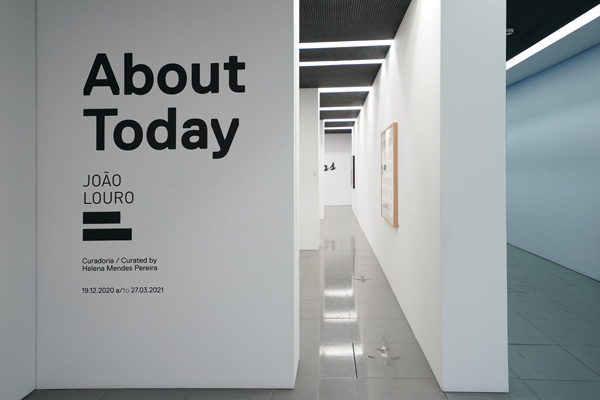
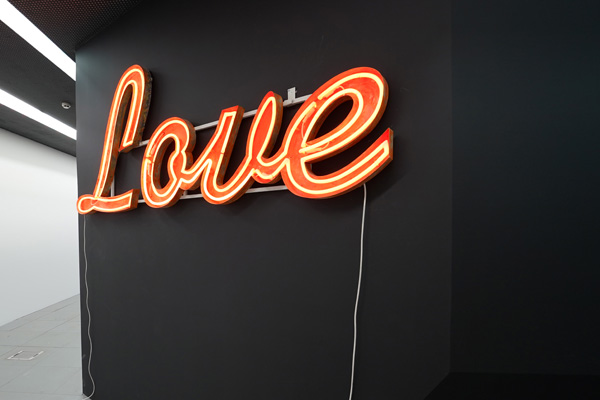
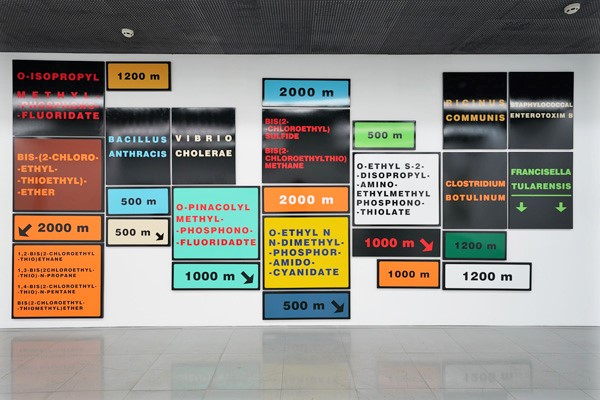
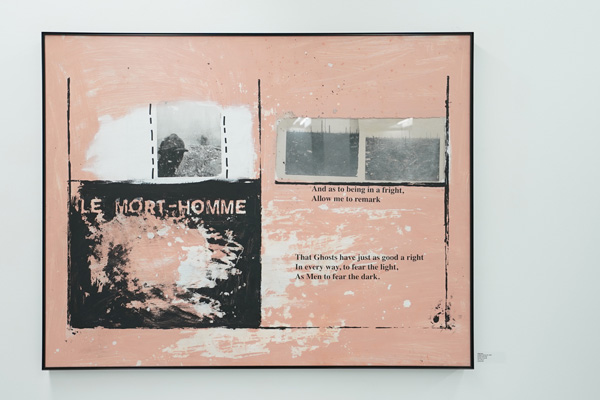
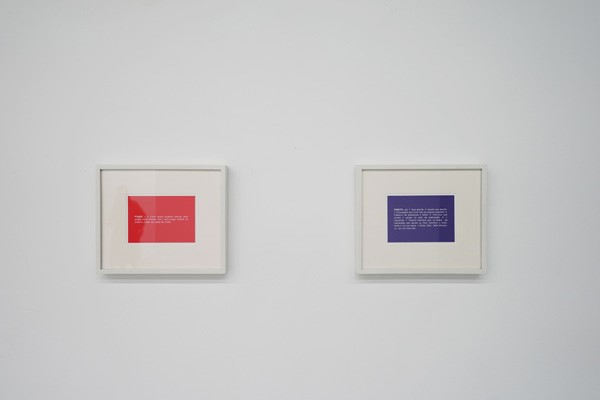
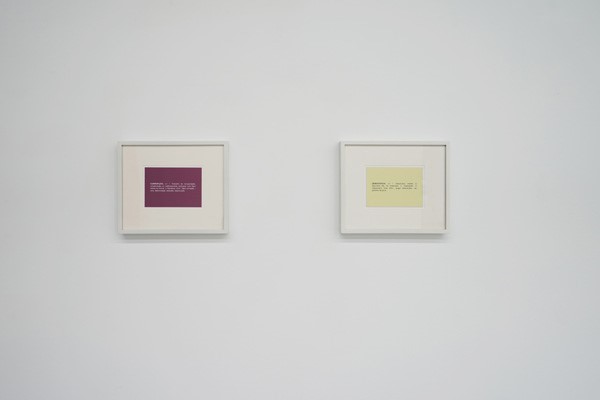

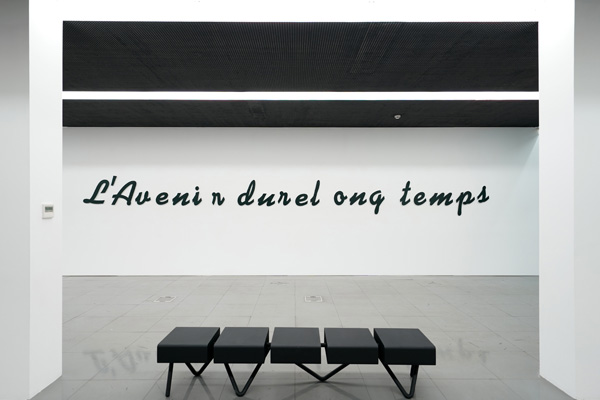
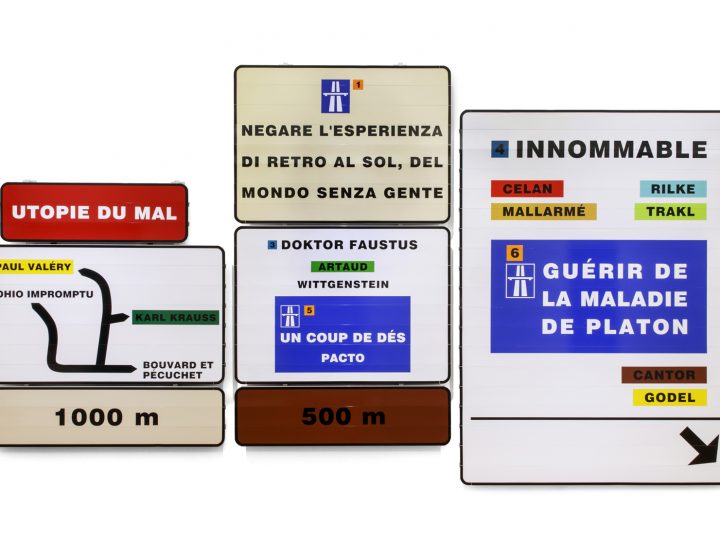
![SIN SERVIR A SU MAJESTAD [solo show]](https://joaolouro.com/wp-content/uploads/2013/06/lecriture-du-desastre-720x540.jpg)
